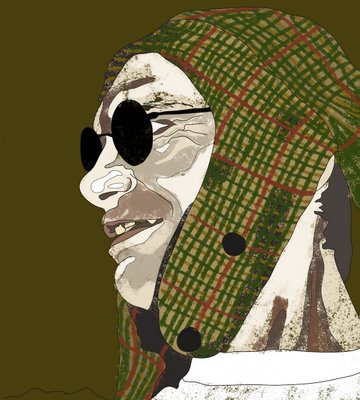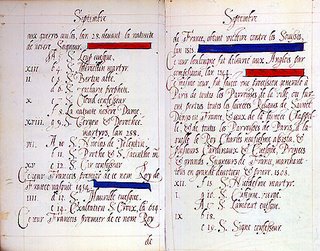Assignment six:
Make a proposal for the future development of your practise in which you identify the following:
Key themes and interests.
An articulation of the domain in which you are working with reference to selected practitioners.
Proposed strategies for the development of your work
Bibliography
"A book is more than a verbal structure or series of verbal structures; it is the dialogue it establishes with its reader and the intonation it imposes upon his voice and the changing and durable images it leaves in his memory. A book is not an isolated being: it is a relationship, an axis of innumerable relationships."
Borges -- Essay: "A Note on (toward) Bernard Shaw"
“One of my key interests is what happens to texts when they are put on the Internet and “The effect of new media on the transmission of various narrative forms.” For example Fairy Tales, Comics, and ghost stories - the list is endless. Within narrative, the Internet represents a return to the manuscript style (or even oral culture) where the reader is expected to interact rather then just be a passive recipient. The examples I gave previously are all forms of storytelling that require a certain level of interactivity, for example when reading comics you navigate your way through them, in an almost intuitive way. Fairy Tales and Ghost Stories started as an oral form of storytelling and weren’t in fact recorded until the late 18th century when obviously their style, and therefore meaning, were changed and subverted. New Media and the enhanced ability to interact with the piece in front of you has again changed meaning and context, and imposes questions on whether these ‘new’ versions have dramatically changed these examples as well as questions on the best way in which to demonstrate and transcribe these narrative and illustrated texts.”
This was and is my proposal for future research and practise. Along the way I have researched various practitioners in the field of narrative, immersion, hypertext, digital storytelling, and illustration with symbolism. Narrative has been my key field of interest for reasons I’m going to illustrate.
At the start of this project I set myself the afore-mentioned question: “The effect of new media on the transmission of various narrative forms” in particular fairytales, and it was from here that I branched out and tried to see what other subsections I would need to examine in order to answer this question. These became my five criteria and have moderately stayed the same. These are: Narrative, Immersion, Illustration, Navigation, and Design. These five criteria are very diverse and it was hard to focus on one without forgetting the others. As this evaluation is intended to review what I have been pursuing in the last few months, I feel it important to state my dissatisfaction at having to create these criteria. Within all of these words that I have chosen there are sub categories leading off into other categories having their own sub categories.
My first port of call was narrative, this being the densest of my criteria as well as my working practise, one of the subcategories being non-linear narrative or modular narrative or, per say, “normal” narrative. I’ve always found the art of constructing a good narrative a hard one. Maybe, not being a writer, I find it quite overwhelming how people manage to achieve this successfully. To add into the mix a non-linear narrative is particularly difficult and a hard thing to get one’s head around. Writers I have looked at include theorists as well as practitioners including Madeleine De Scuderie, Hester Pulter, Borges, Edgar Ellan Poe, Scott McCloud, with theorists such as Murrey, Manovich, Miller, Hillman Curtis, Susan Miller, Racheal Greene, James Elkins and Christiane Paul. Most of these were just for the non-linear narratives, interesting narratives, and theories on narrative not just non-linear ones, and how to get narrative onto the web, although some were reused for my other criteria. I also had to examine specifically fairytale writers and theorists to help me with my actual working practise. These include: Basile (including various translators of his work), Grimm, Perrault, Angela Carter, Apuleus, Kenneth Graham, Arthur Conan Doyle, Brian Froud his writings, theorists; Marina Warner, Vladimir Propp, and Max Luthi. As you can see, there are numerous writers’ and critics’ works explored, and as all of these have been mentioned throughout my research journal, I do not feel that it is imperative to discuss them here. I will include specifically the artefacts and writings that I looked at in my bibliography, along with any practitioners that I have neglected to mention here.
For my project of creating an interactive fairytale, I used the work of Basile fairly extensively. I looked at various translations of his work, leading me to my navigation and narrative structure. I found four translations of Basiles work, all of them very different in content and meaning. I derived my narrative structure by using a linear narrative combining multiple versions as the way in which the user gets from start to finish. The idea is that you still travel in a linear fashion, however by navigating yourself through the various versions yourself, almost editing the text according to how you feel you would like the story to progress. For example, you might start at a grittier Basile version of a fairytale, and then decide you want something a bit lighter for a while and travel down the Grimms’ version of events. Towards the end of the narrative you might wish for a bit more fantasy and imagination so you travel into Perrault’s version. As you are creating the same fairytale, the beginning is always the beginning and the end is always the end, how you get there is your choice. From reading theorists’ work, as well as reading every single fairytale that I could get my hands on, I began notice the apparent migration of characters from one fairytale to another. For example, the wicked stepmother originally started off as a wicked wife. In the original Perrault version of Sleeping Beauty it does not end when the heroine wakes up but the story continues, with the evil step-mother of the prince trying to kill her to reclaim her son. However, in the preceding Basile version (which is the one Perrault, Grimm, Walt Disney etc. use) it is in fact the wife of the prince who tries to kill her. It is plausible that in later versions it was deemed too risky to have bigamy within these tales, and so this character was changed to a step-mother. But it gets more complicated then that! In the Grimm version we do not see this chain of events as it ends before all of this can happen. But Grimm, liking this ‘evil step-mother’ character decided to put her into Cinderella, in which the original Basile version does not contain. FOOTNOTE: SOURCE
The central idea of the project became to combine Vladimir Propp’s observations on character and storyline, while showing the migrating characters from the various versions. So, you could have all versions of all the fairytales. All the narratives could be based on the characters, where a character changes or metamorphoses into a different one, the current fairytale would change. I decided against this due to its prohibitive complexity but it is an idea I would like to go back to and extend. Not necessarily just within fairytales, but as an idea for another type of interactive narrative. The idea that an interactive narrative can still have a linear structure and be successful is what I am most pleased with, and this idea I will take with me for my concluding practical project, and is what I have gained from this module personally.
I’ve continually looked at what is available on the web in terms of interactive narrative and one thing struck me: the type of narrative that is used. Writers in this genre often (and I say this with caution, as not always) use a very ‘poetic’ type of prose, (this could lead me on to a discussion of whether poetry is narrative - something which has always been a bone of contention amongst theorists - but I will resist). The prose can be obscure and/or very confusing (I sometimes suspect, in a hope to make you not notice the bad narrative flow!) and, using a terrible expression, “airy fairy”. I do not like this type of prose (not in books, never mind on the web) and this was something I wanted to work against. I like fantasy, I like to escape, and this was my reason for choosing fairytales, even if it would give me problems later on.
How I am going to progress with this I am as yet unsure. As I have mentioned previously in this journal, Madelaine De Scuderies ideas on narrative are what I really want to research, explore and ultimately “copy”. She used fantasy, and the relationships between the chapters that you decided to read was what led you to your own personal ending. This really fascinates me and if the funding was available, I would like to get hold of a copy to put on the web. Unfortunately, I do not think that this is possible.
Next I looked at “navigation” and I will combine this with my “design” criteria, and as I have already mentioned this I will be brief. The navigation of my piece comes from the narrative, which is how it should be. By researching fairytales, and reading a great deal of them, I came up with my navigation system. Although I am not completely happy with it, and as of yet am not sure if it really works, it has certainly led me into how I will complete my next project. The design came from the structure, generally speaking. I wanted the navigational design to be part of the piece. I didn’t want the way the user interacts with the piece to be an after thought from the design point of view. Again from reading, researching, and looking I noticed that navigation structures were often on the outside of the image or words. In contrast, I wanted and I feel that I have achieved, the design of the navigation to fit with the rest of the illustrations and text. It is an integral part of the piece.
For future study I will go back and look at more ways in which to design navigation, specifically looking at Scott McCloud, whose ideas on interactive comics I did not fully explore. I want to spend time going through his online comics and working out the parts that really work and the parts that don’t. Although he has written a book, which I have read, outlining his theories and ideas, I feel that the only way to implement his ideas into my own projects is by experimenting with what works and what doesn’t. Like Vladimir Propp’s writings on structure, some ideas work in practice and some don’t and I don’t wish to use an idea just because it has been written down: sometimes these ideas work in theory but not in practice. By using these ideas I will be able to see how to progress my own ideas on navigation, design, and navigational design.
Illustration is quite a small part of my research conducted so far. I have looked at artists such as Paula Rego, who specifically looked at fairytales for a series of portraits. I like her rather “dirty” analysis of them, they’re modern yet still true to the tale she is wishing to depict. This was something which I wanted to do on my own illustrations and it was interesting to see how she achieved this through body language and expression. Other artists such as Kiki Smith, Terry Winderling, Brian Froud and Alan Lee also look at myth and fairytales.
Immersion is also a key part of my research, and something which I am going to continue to develop;
Hypertext systems should take about 1/4 second to move from one place to another. If the delay is longer, people may be distracted; if the delay is much longer, people will stop using the system. If the delay is much shorter, people may not realize that the display has changed
Arkinsons Law.
As you can see there is a very fine line in keeping the user stimulated and happy. Came across Arkinsons Law quite late on in my project, and although it was written in 1993 which is terrably out of date I still think its important to look at in more detail. I think this gives me a reason to learn databases and how to impliment them into Flash. Databases can carry much more imformation, and allow you to have a quicker retrieval of the information. At the moment my interactive fairytale runs much too slow and I wouldn’t even wait for it. This is my key problem which has to be addressed for my final project.
My proposed strategies are as follows:-
(1.) To Learn HML and Databases.
(2.) To read more theory on navigational design, as well as experimenting with some of Scott McClouds theorys and ideas.
(3.) Completely finish my interactive fairytale and get it published at the “Eastgate Serious Hypertext” website
(4.) Start to write my own narrative based on ideas by Madeleine De Scuderie and Vladimir Propp.
(5.) Research Mobile technologys and the implications that this will have on the general design of the page.
Bibliography: Key texts and articles that I have looked at. Throughout my online journal I have also stated other sources and images.
Books:
(1.) “The Great Fairy Tale Tradition: From Straparola and Basile to the Brothers Grimm”(Norton Critical Editions). Jack Zipes.
(2.) “From the Beast to the Blonde: On Fairy Tales and Their Tellers.” Marina Warner.
(3.) “The Classic Fairy Tales: Texts, Criticism” (Norton Critical Editions). Maria M. Tatar.
(4.) “The Blue Fairy Book” (Dover Storybooks for Children). Complied by Andrew Lang
(5.) “The Complete Brothers Grimm Fairy Tales”. Brothers Grimm
(6.) “Faeries” (25th Anniversary Edition). by Brian Froud (Illustrator), Alan Lee (Illustrator)
(7.) “Paula Rego” (Paperback). John McEwen.
(8.) “Hamlet on the Holodeck: The Future of Narrative in Cyberspace” (Paperback). Janet Murrey
(9.) “Digital Storytelling : A Creator's Guide to Interactive Entertainment.” Carolyn Handler Miller.
(10.) “Chris Crawford on Interactive Storytelling” Chris Crawford
(11.) “Interactive Storytelling: Techniques for 21st Century Fiction”
Andrew Glassner
(12.) “Digital Art (World of Art).” Christine Paul
(13.) “Complete Tales & Poems (Vintage)”: Edgar Allan Poe
Websites:
New Media Lab:- http//nml.ru.ac.za
Wikipedia:- http://en.wikipedia.org/wiki/Main_Page
Fad interest:- http://www.fadresearch.com/about.html
Interactivity pdf:- http://dag.idi.ntnu.no/interactivity.pdf
Scott McCloud:- http://www.scottmccloud.com
A 24 hour digital comic:- http://castlezzt.net/24hourcomic.cfm
A 24 hour digital comic:- http://members.aol.com/opheliab/24hour1.html
Online comics:- http://www.webcomicsnation.com
Fairytales:- http://www.surlalunefairytales.com/index.html
Word Power:- http://www.word-power.co.uk/catalogue/0748617701
Illustrated Borges:- http://www.themodernword.com/borges/kernan/kernan.html
Serious hypertext:- http://www.eastgate.com/Guidelines.html
Flash help:- http://www.flashkit.com/index.shtml
Ernest W Adams:- http://www.designersnotebook.com/
Paula Rego:- http://library.thinkquest.org/17016/frames.htm
Janet Murrey Links:- http://www.lcc.gatech.edu/~murray/
Neil Gaimon:- http://www.neilgaimon.com
Madeleine de Scudery’s:- http://www.femspec.org/samples/salon.html
Lev Manovich:- http://www.manovich.com
Kiki Smith:- http://www.moma.org/exhibitions/2003/kikismith/
Mark Stephan Meadows:- http://bore.com/
Ed Rusca:- http://www.crownpoint.com/html/home.html
Edward Gorey:- http://www.pbs.org/wgbh/mystery/gorey.html
Vladimir Propp:- http://www.brown.edu/Courses/FR0133/Fairytale_Generator/propp.html
Borges:- http://www.themodernword.com/borges/
Virginia Woolf:- http://www.findarticles.com/p/articles/mi_hb1455/is_200505/ai_n15061943
Doris Lessing:- http://lessing.redmood.com/
Dave McKean:- http://www.mckean-art.co.uk/
Brian Froud:- http://www.worldoffroud.com/index.html
Terri Winderling:- http://www.endicott-studio.com/bios/bioterri.html
Marina Warner:- http://www.marinawarner.com/stories.html
Ted Nelson:- http://xanadu.com.au/ted/
Alan Key:- http://ei.cs.vt.edu/~history/GASCH.KAY.HTML
HML help:- http://www.3schools.com/index.asp
Databases help:- http://www.oreilly.com/
Macromedia:- http://www.macromedia.com
Six principles of narrative:- http://www.kleene-star.net/sixprinciples/authorship/index.html
Use of narrative in interactive design:- http://www.kleene-star.net/sixprinciples/authorship/index.html
Interactive narrative podcast a look at technology:- http://www.odeo.com/channel/6803/view
The book is dead:- http://www.press.umich.edu/pdf/0472111140-01.pdf
Authoring tool for non linear narratives:- http://www.press.umich.edu/pdf/0472111140-01.pdf
Bad hypertext novel:- http://www.unknownhypertext.com/trip.htm
Network performance:- http://www.maryflanagan.com/articles/navigatingnarrative.pdf
Database of virtual art:- http://www.virtualart.at/common/recentDocument.do
IN-DUCE, INTRO-DUCE:- http://www.in-duce.net/intro/
Designer:- http://www.soulbath.com/main.html
Designer:- http://www.hardcandymovie.com/experience/
The dark crystal official comics adaptation:- http://www.lauraknauth.com/MovieCollectibles/Marvel.html
Fairytale narratives:- http://www.public.iastate.edu/%7Elhagge/newpage3.htm
The Endicott studio journal:- http://www.endicott-studio.com/
Fairytale research:- http://www.skyehidesigns.com/mainbook.html
Tate gallery:- http://www.skyehidesigns.com/mainbook.htmlBasile fairytales:- http://www.surlalunefairytales.com/pentamerone/index.html





























